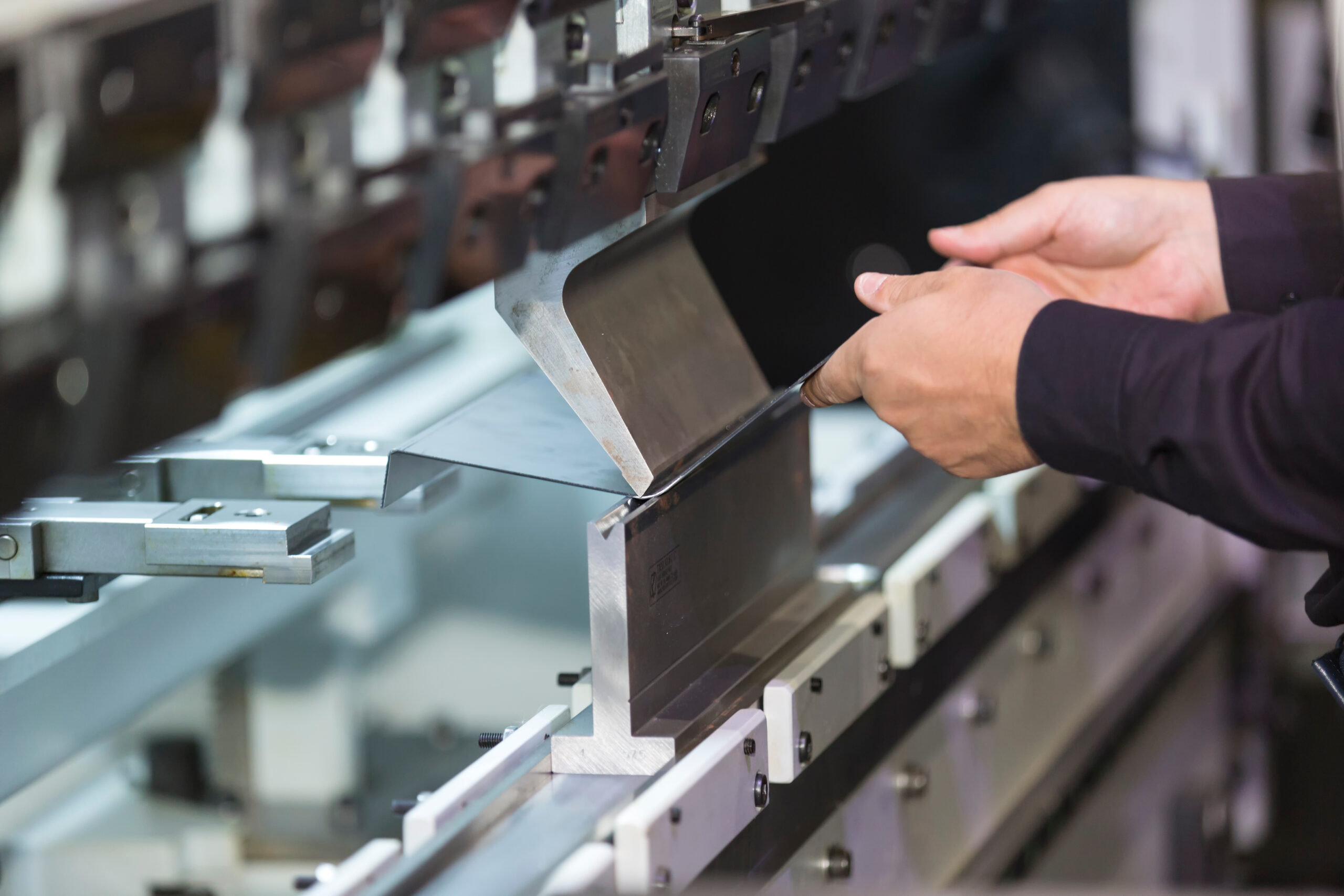Sheet metal fabrication is a versatile and fundamental process in manufacturing, offering many possibilities for creating complex and functional components. Among the techniques that stand out are bending, folding, and shaping, each with its unique advantages and applications.
Understanding Bending, Folding, and Shaping in Sheet Metal Fabrication
Bending: Precision in Curvature
- Definition and Mechanism: Bending involves applying a force to the sheet metal part to change the geometry. The force stresses the sheet metal part beyond its yield strength, causing it to bend without breaking.
Design Guidelines:
- Incorporate radius and angle specifications into your CAD file, and make sure the bend radius equals (or is greater than) the material thickness.
- Be mindful of material thickness, as excessive thickness can lead to cracks or undesired deformations, but ensure the bend is located where enough material is present.
- Consider the use of bend allowance calculations for accurate designs.
- Avoid designing features like holes and slots close to the bend. A good rule of thumb is to design features at least three times the material’s thickness away.
Optimal Use Cases:
- Creating components with U-shapes, L-shapes, or more intricate geometries.
- Forming brackets, enclosures, or any part requiring angular precision.
Folding: Seamless Integration of Multiple Bends
- Definition and Mechanism: Folding involves bending a sheet metal workpiece along a straight axis to create multiple bends in a single operation. This process is ideal for creating complex, three-dimensional shapes.
Design Guidelines:
- Clearly define the fold lines and angles in your CAD file.
- Account for material springback, ensuring the final product aligns with design specifications.
- Utilize a consistent material thickness throughout the design.
Optimal Use Cases:
- Manufacturing components with interconnected bends, such as boxes or enclosures.
- Achieving complex geometries that require precision and efficiency.

Shaping: Sculpting Sheet Metal with Precision
- Definition and Mechanism: Shaping involves manipulating a sheet metal workpiece to form intricate curves or contours without creating distinct bends. This method is commonly employed for creating aesthetically pleasing or functional designs.
Design Guidelines:
- Specify the desired shapes and curves clearly in your CAD file.
- Use radius values to guide the shaping process.
- Consider the impact of shaping on material integrity and structural stability.
Optimal Use Cases:
- Crafting automotive body panels with smooth curves.
- Designing decorative or ornamental features in architectural applications.
Why Bending, Folding, and Shaping are Invaluable in Sheet Metal Fabrication
- Precision and Reproducibility: These processes offer unparalleled precision, ensuring that fabricated components meet exact specifications consistently.
- Cost-Effectiveness: Bending, folding, and shaping often require fewer tooling changes compared to other fabrication methods, leading to cost savings in production.
- Versatility in Design: The flexibility of these processes allows for the creation of diverse and intricate designs, opening up new possibilities for product aesthetics and functionality.
- Efficiency in Production: Bending, folding, and shaping can streamline the manufacturing process, enabling the creation of complex components in a single operation.
Mastering the art of bending, folding, and shaping in sheet metal fabrication is crucial for manufacturers seeking precision, versatility, and efficiency. By understanding the guidelines for designing CAD files and recognizing the optimal use cases, businesses seamlessly blend form and function in the world of manufacturing.
